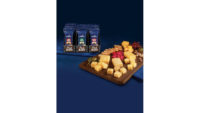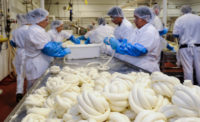
The USA has seen increased cultural diversity and popularity with the culinary styles of Latin America for several years. This has increased the trend for purchasing and consuming Hispanic foods, as reflected by the increased Hispanic-style cheese (HSC) production in the United States. Hispanic-style cheeses now comprise about 2.8% of total cheeses production in the USA and as one of the fastest-growing segments will likely continue to innovate and grow in the future.
The growing popularity of Hispanic cheese calls for increasing production to sustain the market demands at various destinations. However, scaling up production could encounter various challenges in the U.S. cheese market. According to the 2021 Wisconsin Agricultural Statistics, California is the leading producer of HSC, followed by Wisconsin. Popular Hispanic cheeses include queso fresco, asadero, manchego, oaxaca and cotija.
Hispanic cheeses are unique to Hispanic food and cannot be replaced with non-Hispanic cheeses. These cheeses can be categorized as fresh cheese, hard cheese, and melting cheese. The most popular varieties of Hispanic cheese are fresh white cheeses suited for salad and snacks. They are used in the crumbled form and melt resistance at a high temperature.
Hard cheeses, on the other hand, are ripened and thus carry identifiable taste and flavor. Due to their dry and crumbly texture, they make a good choice of seasoning and garnering. Finally, Hispanic melting cheeses are well known for their uses in quesadillas or nachos due to their smooth, creamy melt consistency.
Challenges and opportunities abound
The growing popularity of Hispanic cheese calls for increasing production to sustain the market demands at various destinations. However, scaling up production encounters several challenges — most notably the short shelf life for fresh cheeses. The shelf life of fresh cheese is limited to 60 to 90 days. The significant defects observed are whey separation, mold growth, and textural integrity (hard to crumble/shred). In addition, there have been isolated cases of bloating and yeasty flavor development in these cheeses.
These challenges call for opportunities to come up with various solutions. Research tells us that these defects are linked to the seasonal variations in milk composition, plant hygiene, and temperatures abuse during transport and storage. Standardization of milk using nonfat dry milk, milk protein concentrate/milk protein isolate, casein, and various fat sources can increase productivity and reduce the chances of spoilage (e.g., physical, chemical, and microbiological) that are governed by moisture migration.
The strict hygienic good manufacturing practices (GMP’s) must be followed to reduce the bloating, yeast, mold growth, and minimize flavor (e.g., sour, rancid, pungent, etc.) defects. First and foremost, educating the workforce and creating a better system at dairy manufacturing plants can help alleviate spoilage. The use of antifungal agents such as propionates, sorbates, etc., also can extend shelf life.
Also essential is for dairy personnel to maintain control over the transport and storage temperatures. This will help to reduce the undesirable textural integrity (e.g., whey off, sticky curd) and microbial spoilage. Although some of these spoilages are regulated by the presence of oxygen, they could be extended by vacuum or modified atmosphere packaging.
More research in the area of microbial cultures, pathogens control measures, and noble technologies (e.g., high-pressure processing, pulsed electric fields, high-pressure homogenization, etc.) to increase the shelf life and focus on matching healthy American lifestyle (e.g., low fat, low salt), will institute a solid foundation for the sustainable growth of HSC. Overall, the Hispanic cheese market will continue to grow and evolve to surpass the challenges with constant research in science and market outreach.




